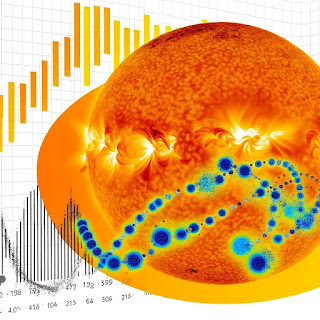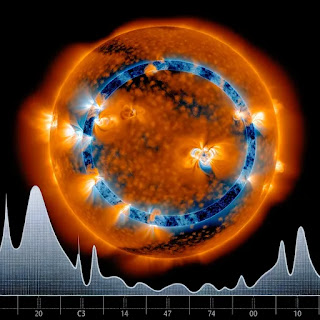Sun's Solar Cycle
The Sun's Solar Cycle: A Dynamic Phenomenon
The Sun, the star at the center of our solar system, is a dynamic and ever-changing entity. One of the most fascinating aspects of the Sun's behavior is its solar cycle, a periodic change in the Sun's activity and appearance that has far-reaching effects on Earth and throughout the solar system.
What is the Solar Cycle?
The solar cycle, also known as the sunspot cycle, is an approximately 11-year cycle marked by variations in the number and size of sunspots on the Sun's surface. Sunspots are dark, cooler areas on the Sun's photosphere caused by magnetic activity. The cycle is driven by the Sun's magnetic field, which undergoes a complete reversal every 22 years, with the solar cycle representing half of this magnetic cycle.
Phases of the Solar Cycle
1. **Solar Minimum:** This phase is characterized by a low number of sunspots and minimal solar activity. During solar minimum, the Sun's magnetic field is weakest, and the solar wind, a stream of charged particles emitted by the Sun, is at its lowest intensity.
2. **Ascending Phase:** Following the solar minimum, the number of sunspots begins to increase, marking the start of the ascending phase. This phase sees a gradual rise in solar activity, including an increase in solar flares and coronal mass ejections (CMEs).
3. **Solar Maximum:** The peak of the solar cycle, solar maximum, is a period of high solar activity. Sunspots are most numerous, and solar phenomena like flares and CMEs are more frequent and intense. The Sun's magnetic field is also at its strongest during this phase.
4. **Descending Phase:** After reaching the peak, the solar cycle enters the descending phase, where the number of sunspots and the level of solar activity start to decrease, leading back to the next solar minimum.
Impact of the Solar Cycle
The solar cycle has significant effects on space weather, which in turn can impact satellite operations, GPS systems, and power grids on Earth. During solar maximum, the increased solar activity can lead to more frequent and intense geomagnetic storms, disrupting communications and navigation systems.
The cycle also influences Earth's climate, although the extent of this impact is still a subject of research. Some studies suggest that variations in solar activity can affect climate patterns, such as precipitation and temperature.
Conclusion
The Sun's solar cycle is a testament to the dynamic nature of our star. Understanding this cycle is crucial for predicting space weather events and mitigating their effects on our technology-dependent society. As we continue to study the Sun, we gain valuable insights into the workings of our solar system and the forces that shape our environment.




Comments
Post a Comment